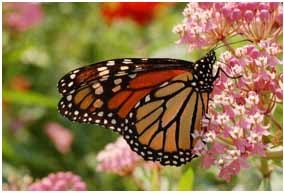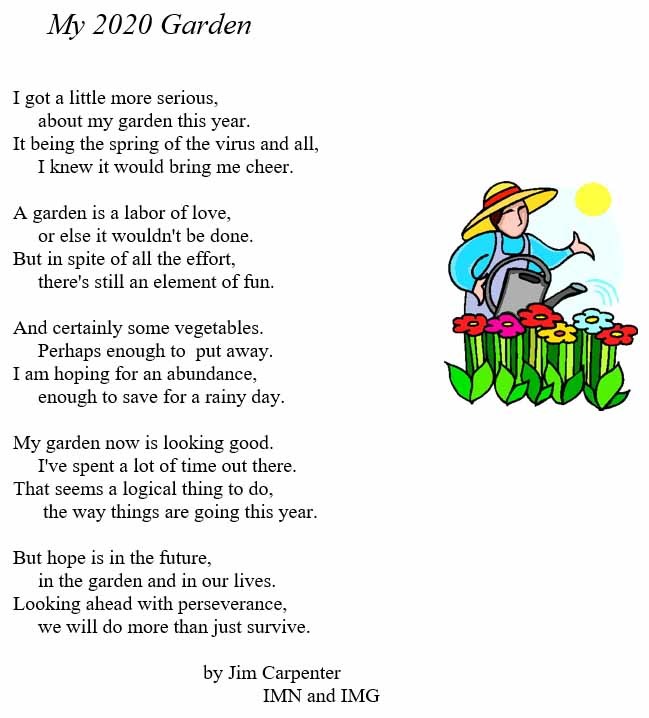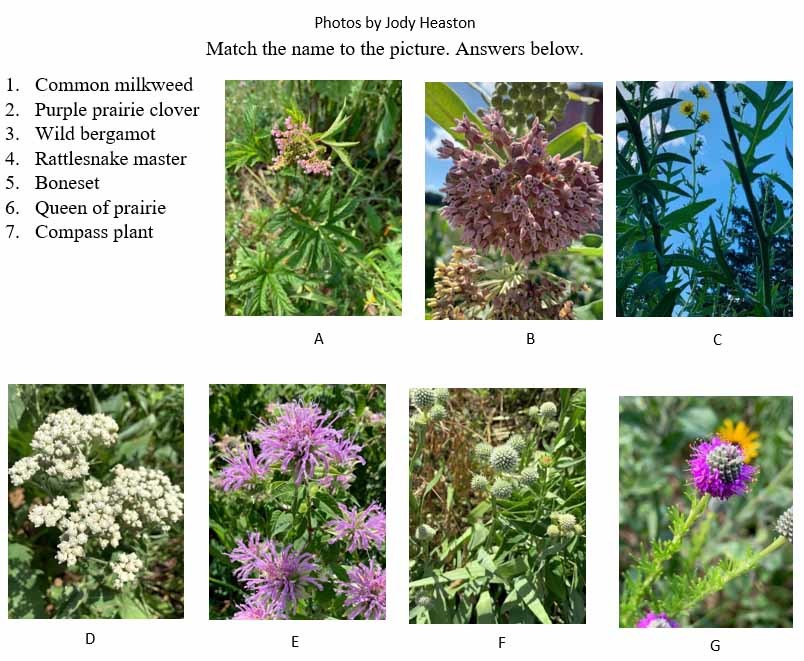 A few years ago, I drove to Ouabache State Park with a fellow Master Naturalist to attend a program on Monarch butterflies presented by Jody Heaston. While I’d always enjoyed butterflies, that enjoyment was limited to observing and appreciating them. Something clicked that day; however, and I came back with Monarch chrysalis, larva, and milkweed plants, and I was hooked. Since then, I’ve hunted for and collected larva each summer and planted three different types of milkweed plant. Every day I’m out in my milkweed gardens looking for larva and clipping fresh leaves to feed the hungry caterpillars in my “Monarch Factory”, as the two little boys who live next door call it. Like many other people, I’m trying to help, if only on a small scale, to keep the Monarch population going. So, it was with a great deal of interest I read a couple of articles in the news, (perhaps some of you have seen them, too), about the effort in the UK to reintroduce the Large Blue Butterfly to parts of that country.
The Large Blue Butterfly is globally endangered, officially classified as "near threatened" on the IUCN Red List of Threatened Species, and was declared extinct in the UK in 1979. The Large Blue has a wingspan of more than 2 inches and a distinct row of black spots on its upper forewing, on a blue background. Conservation experts from several different environmental organizations spent five years preparing an area in Rodborough Common in Gloucestershire, southwest England, for the release. Cattle grazing was controlled in the area's scrub cover to aid the area's population of red ants, and to encourage the growth of wild thyme and marjoram plants, which are a source of food and a key egg-laying habitat for the butterflies. Small temporary grazing areas were created to allow cows and long-horn cattle to graze to provide the right conditions for the red ants.
The red ants, (Myrmica sabuleti), play a vital role in the Large Blue Butterfly's life cycle. During summer, when the ants are out foraging, the ants think that the larva of the Large Blue is one of their own and carry it to their nest. The caterpillar changes from an herbivore to a carnivore, feeding on ant grubs throughout the autumn and spring until it is ready to pupate and emerge the next summer as a butterfly.
The Large Blue Butterfly was re-introduced to the UK from continental Europe as part of an almost 40-year conservation project. Around 1,100 of the butterfly’s larvae were released at the West Country locations, with 750 butterflies successfully emerging the next summer. It is the first time in 150 years the Large Blue Butterfly—the largest and rarest of all nine British blue butterflies—has been recorded at Minchin Hampton and Rodborough Commons. Experts say that the insects have established a stronghold at core sites around the country, and in some cases have naturally colonized some areas in southern England—a positive sign that they hope will continue. It’s pretty cool to hear about successful environmental efforts, wherever in the world they occur.
A couple of updates from the State Council:
- Due to the cancellation of so many of our volunteer and educational opportunities, the Council has been discussing lowering both the number of volunteer hours and educational hours needed to complete the Advanced Certification this year. We will let you know what the new hour requirements will be once that decision has been made.
- There have been a growing number of requests for approval for online and virtual education programs, because most in-person events have been canceled. The Council has been reluctant to give blanket approval to these training opportunities because there are so many different programs, and it would be difficult to verify the quality of each program. We are discussing ways to solve this dilemma.
- We are all eager for our programs to return to some semblance of normalcy and hope you are all keeping safe and healthy.
Your IMN Council President,

2019 IMN Host of the Year Award Winners
2019 IMN Host of the Year: Kosciusko County IMN program
2019 IMN New Host of the Year: Marie Laudeman, Indiana Dunes State Park
The winners have been selected and announced, but the presentation of awards has been delayed, so unfortunately there are no pictures at present. We’ll have more details—and pictures—in a future edition of the IMN newsletter.
IMN Program with Youth
by Jody Heaston, IMN State Coordinator
The Indiana Master Naturalist (IMN) program’s mission is to bring together natural resource specialists with adult learners to foster an understanding of Indiana’s plants, water, soils and wildlife, and promote natural resource volunteer service within the State of Indiana, but we have expanded our programs to also include youth. Typically in the summer there are many Jr IMN (ages 9-12) and Teen IMN (13-17) camps being offered around the state; however, this summer is not a typical summer. The few sites that did offer camps did so with modifications.
Salamonie Lake offered a teen camp but limited it to only 10 to allow for social distancing during activities. The teens learned about mushrooms, water quality, canoeing, spiders and more.
 Ouabache State Park offered a more at home based Teen/Jr IMN camp. The youth were given a binder with eight lessons that could be done at home or in the park. Twenty kids signed up. They were given eight weeks to complete the lessons. During the eight weeks, three park days were organized that went with lessons and allowed for a more camp feel. The park days were tree planting, birdfeeder construction and graduation. For the tree planting day, Adult IMNs helped Junior and Teen IMNs plant 20 trees at Ouabache. Ten red cedars were placed near the shoreline of Lake Kunkel to help deter geese. Then 10 tulip trees were place around the park to provide shade. The tulip trees were 12-14 feet tall, which required a really big hole! The adults and youth were given a lesson on how to properly plant a tree. With adult guidance, the youth were able to complete their service project. For the rest of the summer, each child is to take care of their tree to complete their volunteer time. Not only did the youth get the satisfaction of helping the park, the park guests will get to enjoy the trees for years to come. It was great to see IMNs young and old working together to help the park.
Webs of Beauty

Many people have experienced unknowingly walking into a spider web on the trails. This is an unsettling feeling; however, finding a spider web glistening in the sun can bring on amazement and wonder.
Spiders produce silk for a variety of reasons. One reason is for the construction of a web for shelter and food. There are four types of webs; tangle, sheet, tunnel and orb. Tangle webs are just that: a tangled mess of silk often seen in basement corners. The sheet is a web that lays flat and can be seen in early morning on top of grass in yards. The tunnel type consists of webs that often lay flat with a tunnel spun into it where the spider hides. The most iconic web is the orb. This web has the circular pattern with the spider typically resting in the middle. The silk that forms the circles or spirals is sticky to catch insects. The strands that go from the outside to the center are called the radius. Those strands are not sticky. Most orb spiders are nocturnal and spend the day hiding near the web. At night, depending on the species, the spider will repair or completely rebuild its web. See how many different types of webs you can find while visiting your favorite state park.
|
Where IMNs are volunteering

Meet Gary Stair, a new volunteer at Prophetstown State Park. He has jumped right in to help with greenhouse efforts and programming. Gary took the IMN workshop at Mounds State Park, which led him to Prophetstown. He answered a few questions about volunteering.
How long have you volunteered at Prophetstown State Park? This is my first year to participate in volunteer efforts at Prophetstown.
What kinds of things do you help out with at the park?
So far I have been able to assist in woodpecker suet feeder construction and in planting of native wildflower seeds in the park's greenhouses for Prophetstown's restoration efforts. I had never worked in a greenhouse before and was not sure what to expect. Meeting other volunteers working on the same project was good fun. Time flew by. I went home having made new friends that I hope to see again. I really do look forward to the next opportunity to assist at Prophetstown.
How often do you volunteer? Monthly, weekly, daily, as needed?
I volunteer on an "as need basis". If they can use me, I want to be there for the park. If I could, I would be at Prophetstown about every day, I think. It is that interesting to me.
What got you interested in volunteering?
Last year a friend shared various volunteer opportunities she was participating in at Prophetstown. The reason for volunteer participation and how the efforts contribute toward education and sharing interested me. I wanted to be part of that.
Anything you'd like to add?
The hardest part about being a volunteer at Prophetstown is just showing up for the first time.
Thanks for becoming a volunteer at Prophetstown, Gary!
Would you like to volunteer at a State Park near you?
Learn how at https://on.IN.gov/INStateParksVolunteer
|
Pollinator Day, Sept. 19
Submitted by Gina Anderson, Purdue University Extension Educator, Floyd County

To ensure the safety of everyone, Pollinator Day will be moved to a virtual platform for 2020. We look forward to this opportunity, which will allow more people to engage in the learning events and activities that happen. No registration is required to participate in the lectures that will take place on the Sunnyside Master Gardener website Sept. 19. Registration is required for the activity packets that will be assembled for youth up to age 12. Please register at https://bit.ly/38UxfxR for the youth activity packets. This link can also be found on the Purdue Extension Floyd County website and Facebook page. We appreciate your understanding of the necessity to move this to a virtual event and look forward to seeing you online on Sept. 19. If you have questions please email Purdue Extension Floyd County ANR Extension Educator Gina Anderson at gmanders@purdue.edu
|

Recommended Nature Books
We asked for recommendations on the IMN webpage for good nature reading and we got a lot of great responses. We also received some more suggestions in the follow-up to the initial virtual book club. If you need something to read, or a gift for a nature lover, here are some fantastic ideas:
-
Gene Stratton-Porter, Novelist and Naturalist, Judith Reick Long
-
The Nature Instinct, Relearning our Lost Intuition for the Inner Workings of the Natural World, Tristan Gooley
-
Walden, Henry David Thoreau
-
Desert Solitaire, Edward Abbey
-
Silent Spring, Rachel Carson
-
Bushcraft 101, A Field Guide to the Art of Wilderness Survival, Dave Canterbury
-
Identifying and Harvesting Edible and Medicinal Plants, Steve Brill and Evelyn Dean
-
The Forest Unseen, David George Haskill
-
Consider the Birds, Debbie Blue
-
Coyote America, Dan Flores
-
The Sound of a Wild Snail Eating, Elizabeth Tova Bailey
-
Soul of an Octopus, Sy Montgomery
-
Secret Life of Trees, Colin Tudge
-
The $64 Tomato, William Alexander
-
Wildflowers and Ferns of Indiana, Michael A. Homoya
-
101 Trees of Indiana, Marion T. Jackson
-
Butterflies of Indiana, Jeffrey E. Belth
-
Mammals of Indiana, John O. Whitaker, Jr.
-
Fishes of Indiana, Thomas P. Simon
-
Peterson Field Guide to Rocks and Minerals, Frederick H. Pough
-
Midwest Medicinal Plants, Lisa M. Rose
-
Listening to Nautre, How to Deepen Your Awareness of Nature, Joseph Cornell
-
Nature’s Best Hope, Douglas W. Tallamy
-
Fallen-log-ology, Michelle Heather Pollock
-
Wake Up, Woods, Michael Homoya and Shane Gibson
-
Newcomb’s Wildflower Guide, Lawrence Newcomb
-
Braiding Sweetgrass, Robin Wall Kimmerer
-
What the Robin Knows, Jon Young
-
Girl of the Limberlost, Gene Stratton-Porter
-
How Birds Behave, Sharon Sorenson
-
Last Child in the Woods, Richard Louv
-
Field Guide to Nature of the Midwest, Kaufman
-
Urban Bestiary: Encountering the Everyday Wild, Lyanda Lynn Haupt
-
The Home Place: Memoirs of a Colored Man’s Love Affair With Nature, J. Drew Lanham
-
Where the Crawdads Sing by Delia Owens
-
A Sand County Almanac by Aldo Leopold
-
Freckles by Gene Stratton-Porter
-
The Eagle Tree by Ned Hayes
-
The Stranger in the Woods by Michael Finkel
-
Prodigal Summer by Barbara Kingsolver
-
The Hatchet and Brian’s Winter by Gary Paulsen (kids)
-
To the Bright edge of the World by Eowyn Ivy
-
The Hidden World of the Fox by Adele Brand
-
The Death and Life of the Great Lakes by Dan Egan
-
Among Wolves: Gordon Haber’s Insight into Alaska’s Most Misunderstood Animal by Gordon Haber
-
Always a River: The Ohio River by Robert L. Reid
-
Winter World: The Ingenuity of Animal Survival by Bernd Heinrich
-
The Bees by Laline Paull
-
Watership Down by Richard Adams
-
Guardians of Ga’Hoole series by Kathryn Lasky
Also recommended:
- Any books by Terry Tempest Williams or Doug Tallamy
- Audubon Guides
- Peterson Guides
|

Do You Know Your Summer Wildflowers?

Have an article you would like to submit or does your organization need volunteers? Let us know by contacting chapman_ej@yahoo.com.
The Indiana Master Naturalist program is sponsored by the Resource Conservation & Development Councils, Indiana Soil & Water Conservation Districts, Purdue Cooperative Extension Service and Indiana Department of Natural Resources. www.indianamasternaturalist.org

|